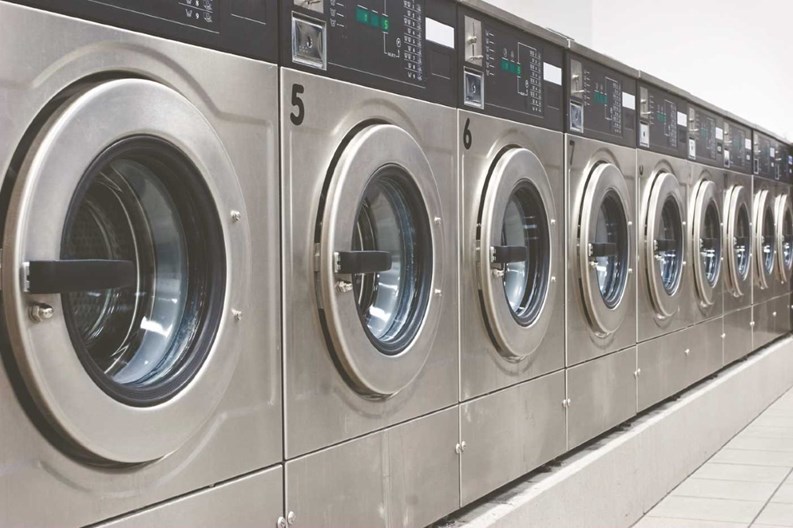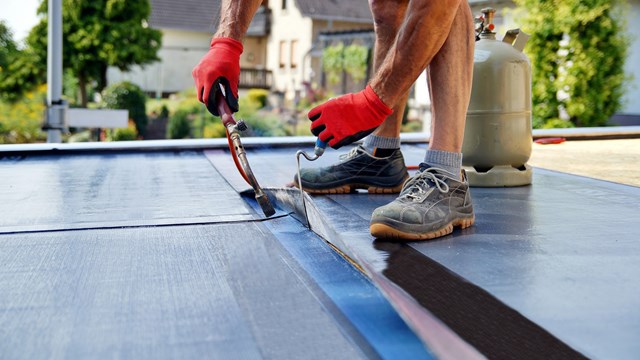Many co-op and condo buildings in New Jersey have a laundry room for residents to use that is more than just an amenity; it’s practically a necessity. Many of the co-op/condo laundry rooms are maintained by laundry contractors who service the machines and collect money from them. And when outside vendors are involved in providing a service for a building, it behooves all residents to understand just what type of service is being provided and the agreement under which that work is being done.
Understanding how contracts with laundry vendors are structured, what to expect under such contracts and available options that could be worked into the agreement, will guide board members and other residents in finding the right laundry contractor for their community.
Changing Technologies
Co-op/condo laundry rooms and laundry technology have advanced markedly in the past couple of decades. One of the most significant innovations has been the development of coinless washing machines and dryers, which now are the rule rather than the exception in New Jersey. Residents use such machines with credit or debit cards, or via smart phone apps that are loaded online through a secure virtual account the customer sets up.
“The business has changed tremendously because historically it was a coin-based operation. The methods of communication have also improved,” says Andrew Fisher, owner of Hi-Rise Laundry Equipment Corp., which provides services throughout New Jersey and New York. “The latest is an app on your phone that allows the machine to deduct from a virtual account.”
Such technology is here to stay, it seems.
“Within the next few years in this market, coin machines will be gone almost entirely,” Fisher says.
New technologies have enabled residents to even check on the action while away from the laundry room. Having tons of coins, or even bills to change, no longer has to be part of a resident’s washing day itinerary. With Laundry Smart systems, the tenant can check from his or her phone to see what machines in the laundry room are in use or broken, or check to see when a load is done or when a machine is empty and available for use.
It’s a big ol' plastic world. Laundry Smart cards are debit cards for laundry machines that you can load on an ATM machine. Cash-to-card machines enable a resident to pay for a specific number of uses of the laundry equipment and to load them onto a card that can be used later.
SEBCO Corp., a Green Brook, New Jersey-based company that services and installs laundry-room equipment in co-ops and condos from New York to Florida, has been offering smart card systems for many years now, according to SEBCO president Steven Breitman. He sees credit/debit card-operated "smart card" systems as becoming a larger part of its business in the years to come. These credit or debit card machines offer an alternative to coin laundries, but one drawback is they are more costly to install. The hardware required to handle a credit card system is very expensive versus a coin machine, somewhere in the neighborhood of $5,000—plus wiring and an extra telephone line, says Breitman. Each machine also needs a card reader, he adds.
Beyond the initial expense of installation, says Breitman, how they work is pretty simple. "Basically, you add value to a smart card—it's a laundry card with a computerized chip in it, sort of like a MetroCard. "Residents can purchase the smart laundry cards and put preset values of $10 to $100 on them. Operationally, you can choose to accept all types of credit cards, batch-total all receipts, and kill the credit cards that were invalid or unauthorized. You can even check and verify every card so that unauthorized ones are not allowed to go through,” Breitman says.
Green and Clean
It’s a greener world, too. Improved energy efficiency in commercial washing machines and dryers means lower energy bills for residential buildings. But while change machines are practically a thing of the past, these more ecologically-friendly appliances aren’t embraced by everyone.
Changes to laundry rooms allegedly improve water and energy use as well. Nearly 10 years ago, the U.S. Department of Energy conducted a washing-machine study at a condominium complex in Boston to determine the potential savings of converting traditional “vertical-axis” machines (top loaders) to “horizontal axis” machines (front-loaders). Their finding: “The changeover to the h-axis washer reduced the average water consumption by 41 percent. The washer energy consumption including washer energy and hot water energy fell by 50 percent due to the hot water savings as well as more efficient motor and controls. The dryer energy savings for the study was 22 percent, which mainly attributed to the high speed spin cycle of the h-axis washer reducing the remaining moisture content of the clothing after wash.”
Decades ago, when a laundry room washing machine broke down, the super or a resident would call the laundry vendor’s office, which would page a technician out in the field. The tech would call the office from a pay phone and find out what the problem is and where to go to fix it. Now, the information can be texted directly to the tech—speeding up the process of getting the machine running again.
If you have a virtual setup for your building’s laundry, the efficiencies abound. It’s more convenient, since machines don’t get jammed full of coins and without coins, theft isn’t a concern. Since coin-operated machines are mostly gone, people who want change for the subway or parking can no longer empty the change machines (because they aren’t there) and thereby deprive others of the coins needed to do laundry. And newer appliances often mean greater efficiency, which translates to a lower carbon footprint for the building.
Those technologies and others have made it so fewer man-hours are needed for vendors to adequately maintain the laundry room. Many laundry contractors have GPS tracking devices in their vans, enabling them to know where technicians are at any moment. The devices help companies to more efficiently dispatch their technicians to trouble spots, speeding customer service.
Finding Agreement
How a building’s staff and a laundry vendor work together depends upon the building and the type of contract it has with the vendor. There are various contracts which buildings negotiate with laundry vendors and many options in machines and services from which to choose.
“We look to establish a relationship with a building whereby we make the investment in the building with the new laundry equipment and whatever technology fits well with that particular property,” said Michael Arbus, the regional sales manager of Mac-Gray Laundry Services in Hoboken. “Then we basically pay that building a percentage of the overall revenue that comes in through the use of the laundry room.”
It boils down to what is important to a building’s residents, which includes not just the appearance of the laundry room and its appliances, but the details of the contract with the laundry vendor. Do residents have an ecological sensitivity which makes them want energy-saving washing machines? Or maybe total control of the laundry room is what most residents want, rather than having a vendor run the show; these and other considerations should guide an association board in its choice of laundry vendor, the models of appliances the complex uses and the type of contract signed with the vendor.
Laundry room management/ maintenance contracts can be brokered as a lease arrangement, as a management arrangement, or as a rental arrangement. A lease arrangement allows the vendor to lease the space from the building board and management and operate the laundry room in that space. In a management arrangement, the building owns the appliances or leases them from the contractor, which maintains the machinery. A rental agreement allows the vendor to rent the space for the laundry and operate the facility. Some buildings might opt to manage the facility themselves, and lease the machines and contract maintenance of the place to a vendor.
Under most contracts, the laundry company provides everything from washer-dryers to cash-to-card machines. The cost of the machinery is borne by the company, which will replace broken machines at no cost to the customer and also will absorb some build-out costs such as electrical work and plumbing needed to set up the vendor’s machines. In many contracts, a flat rate fee is negotiated, whereby a portion of proceeds from the laundry goes to the building as a monthly fee. Some buildings negotiate a contract that stipulates a percentage of proceeds from the use of the facility be paid to the building monthly.
“The most traditional structure is where the vendor leases the space and pays the property a fixed monthly rental amount,” Fisher says.
Under most contracts, if the agreement ends and another vendor is chosen, the first vendor removes its appliances. Extraordinary costs for retrofitting the facility, such as recessed lighting or marble tile requested by residents, will be paid by the building.
The average contract length is six to eight years, but it can be shorter or longer as the customer likes, Arbus says. However, some vendors will shy away from a 1-year or 2-year contract since they view it as a losing proposition, because the wear and tear on the machines is such that a longer term contract is more feasible for the vendor.
Survey & Reassess
While it is generally suggested contracts be assessed by the building’s management during the last few years of a multi-year contract, Arbus suggests both parties always keep tabs on the contracts. And when it comes to re-negotiations, Arbus urges building managers to peruse the contract, ensuring there are no hidden clauses.
“Property managers should continually review their contracts,” Arbus said. “They should make sure when they enter into a contract they're not signing one that has any auto-renewal clauses or Right of First Refusal clauses, because that could tie them in with a vendor they don't want to stay with long term.”
Some types of machines might be unacceptable to tenants, while other concerns might not be evident. The property manager should survey tenants and see what they think about how the laundry room is run, and how they think the laundry room could be improved. Then the manager should check into potential competitors, and see if one might provide a better value or better service than the current vendor.
A building that is having repair issues with its laundry vendor might want to consider a new company. If the current vendor is not fulfilling any of its obligations, it may be time to find a new vendor. If the current vendor is doing a good job, a tweaking of the contract might be all that’s needed. Communication is essential.
The laundry vendor’s main concerns during the renegotiation process are that they get a decent contract so they can make some money. Arbus explains that laundry companies will often approach the building's management to discuss renegotiation up to a year before the contract is close to expiring. "We want to keep the building from going out to bid, so if it's an eight-year contract, we'll go in year seven and talk with them,” he says.
If a building opts not to renew a contract with a given laundry vendor, but that vendor owns the washing machines and other related hardware, the laundry room gets torn out and a new one is re-installed by the new vendor.
Jonathan Barnes is a freelance writer who regularly contributes to The New Jersey Cooperator and other publications. Lisa Iannucci, a freelance writer, and editorial assistant Enjolie Esteve contributed to this article.







Leave a Comment